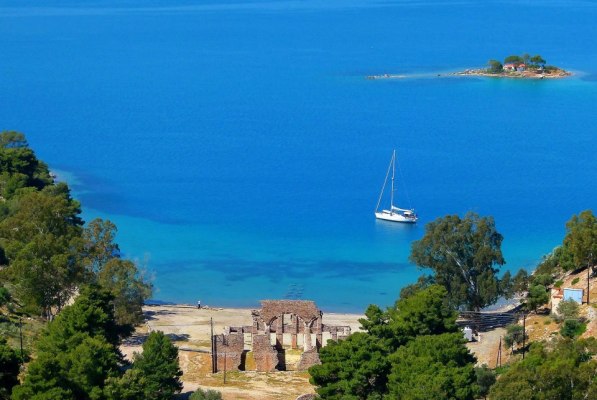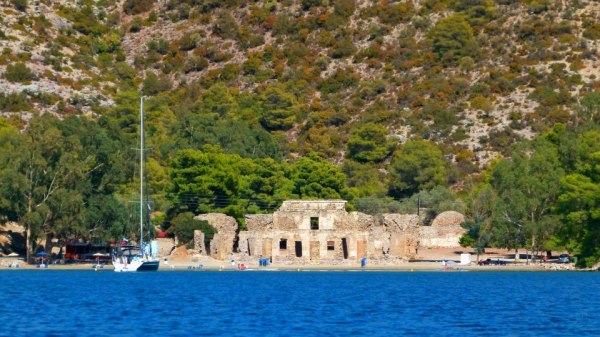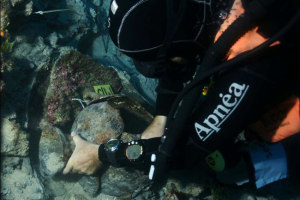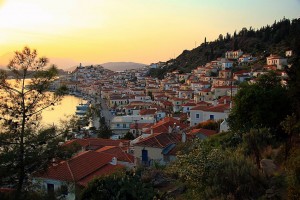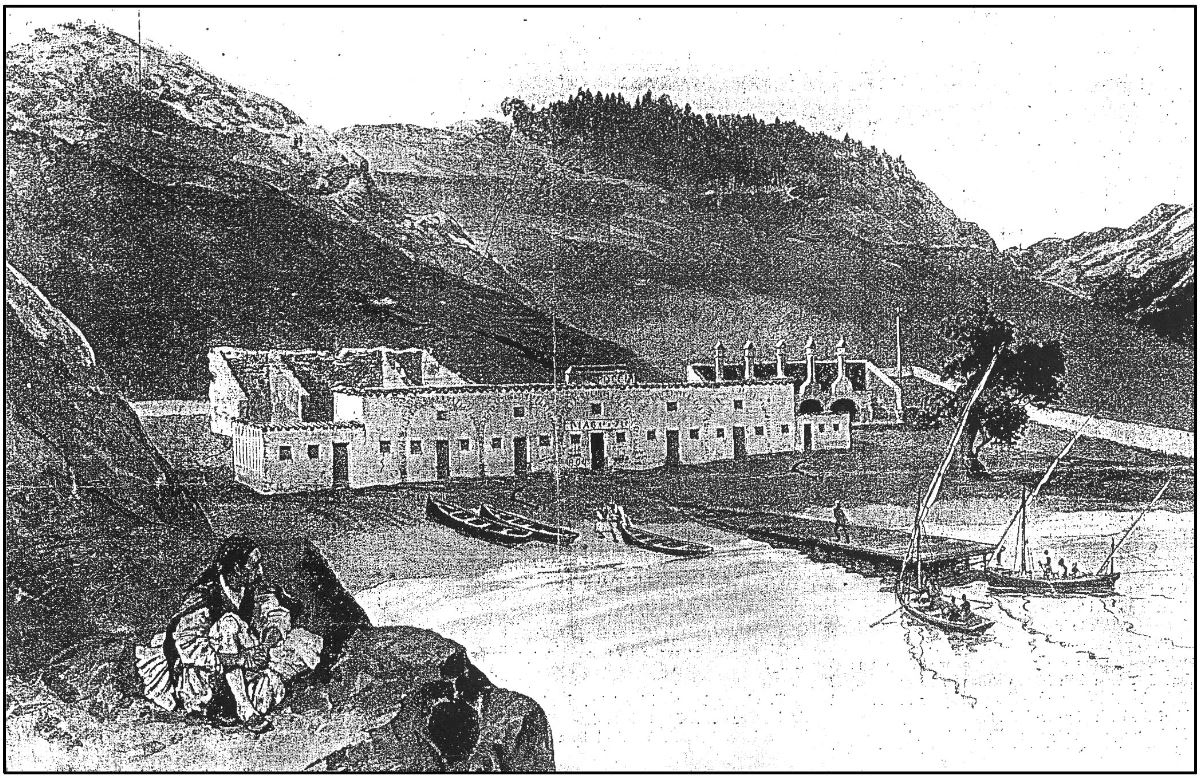
Russian Bay is set amphitheatrically along a small cove framed by thick pine woods and sheltered from the channel by the pretty Daskalio islet.
The ruins are all that remains today from the abandoned Russian Naval Station. The Treaty of Kuchuk Kainarji signed in 1774 between Russia and Turkey ended the Russo-Turkish war that had erupted four years earlier. As the victor, Russia was rewarded with free passage for its fleet in the seas under the Ottoman Empire. Russian naval activity increased after Russia again emerged victorious from the second Russo-Turkish war of 1788-1792, when the Russians chose the sheltered Poros strait for a naval support base. According to several accounts, by the early 19th century, the Russian Navy had established itself at Poros, occupying the site of the current Greek Navy Training Center. The Russians also built warehouses for their ships’ resupply as well as large bread ovens to feed the ships’ crews. These facilities stood until 1830 when Ioannis Kapodistrias purchased them from the Russians to set up the Greek Navy’s first station. In exchange, he ceded the pine-framed cove near the strait’s northwestern end to the Russians to relocate their naval station. The new Russian station was even larger, with bigger warehouses and bread ovens.
Russian Bay later figured in an incident marking a ill-fated period in the island’s history. On the dawn of July 27, 1831, the government forces under Kallergis and Nikitaras’s irregulars snuck onto the island using vessels belonging to the Russians, who had rushed to the governor’s aid and controlled the northwestern sea lanes into Poros. The troops landed at Russian Bay and ambushed the blockade set up by the Poriots and chieftain Christos Mexis on the island’s canal with the aim of ending Miaoulis’s mutiny of the National Fleet. This attempt failed. On August 1, the fleet was bloen up by Miaoulis himself and the islanders’ homes were torched. Some dissenters on the Poros were held at bay by the Russians at their naval station.
The Russian facilities were maintained for several years but deteriorated over time as Russian naval superiority in the Mediterranean gave way to British. By the early 20th century, just a single Russian guard held watch over the empty storehouses. Alexandros Tombazis, the Greek ambassador to Russia at the time, suggested that the Russian tsar transfer the land back to the Greek state for use by the Greek Navy. The tsar ageed and the Russian Naval Base was turned over to the Greek Navy, which at the time was headquartered on Poros.
But the facilities fell into disuse and its material was looted for use in the construction of new buildings the Progymnastirion. The final blow was dealt in 1935, when the Greek state sold the naval station to a private owner. The property changed hands several times, with successive owners seeking to exploit the bay for tourism at the expense of its historical importance and pristine nature. In 1989, an alliance of local civic groups led by the Poriotissa Women’s Association succeeded in persuading the Ministry of Culture to declare Russian Bay under historical preservation, with a 100-meter protected zone around the ruined buildings.
Little remains today of the former naval complex except for part of the main building’s arched facade. Locals have appealed to the new owner, a Russian businessman, to preserve the site as a cultural beacon through mild and sustainable tourist development that respects the site’s natural beauty and history and can become a symbol of the good relations shared by the peoples of Russia and Greece.
Diane Shugart



